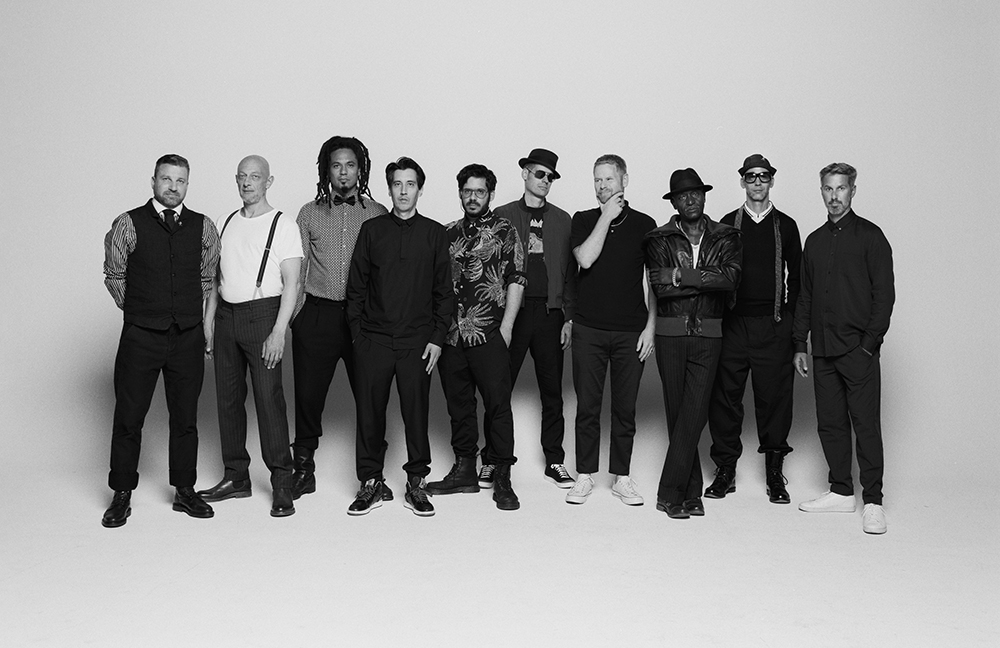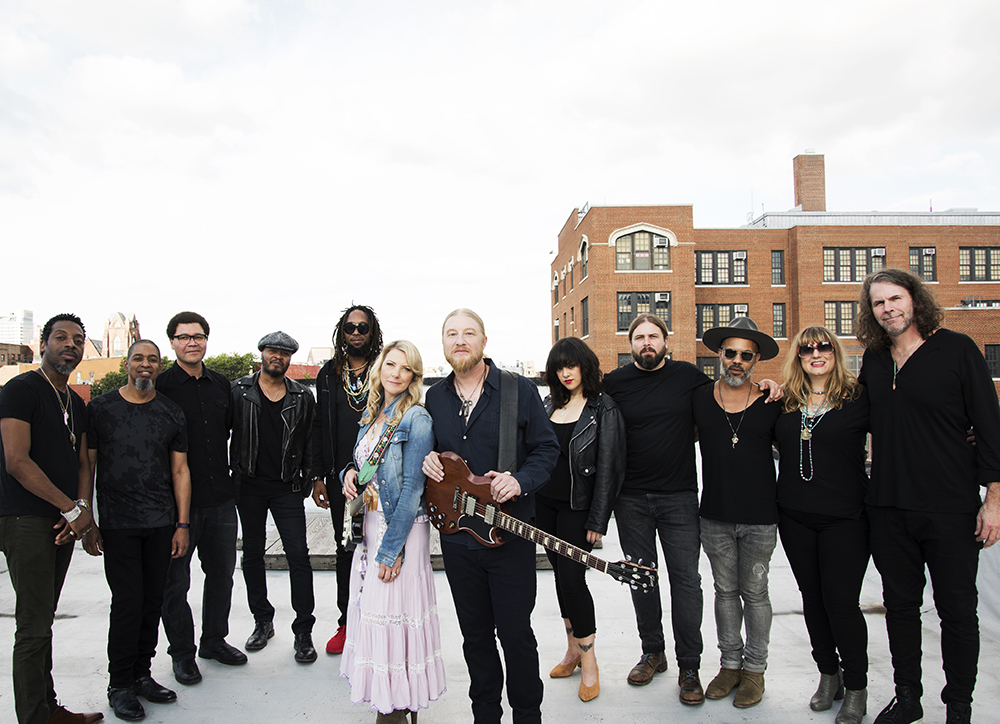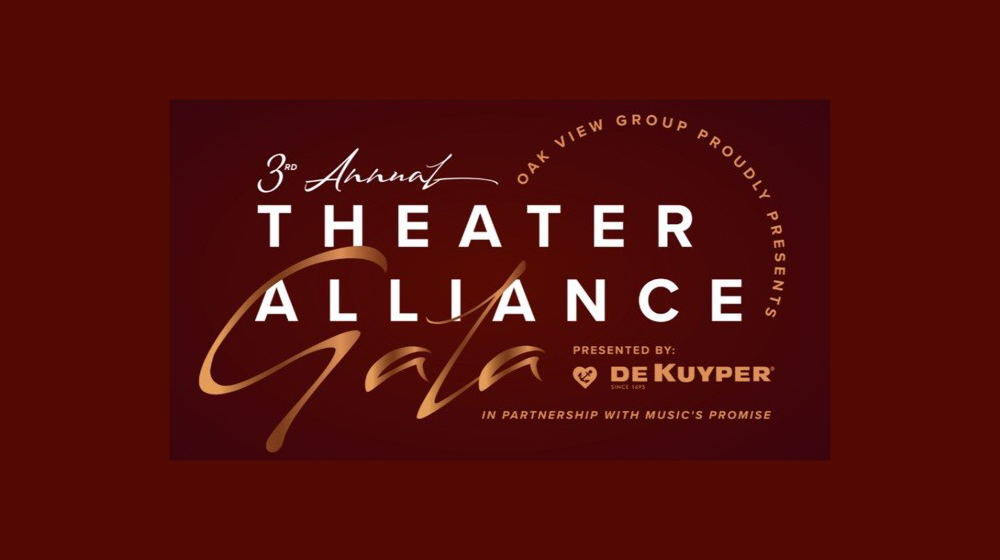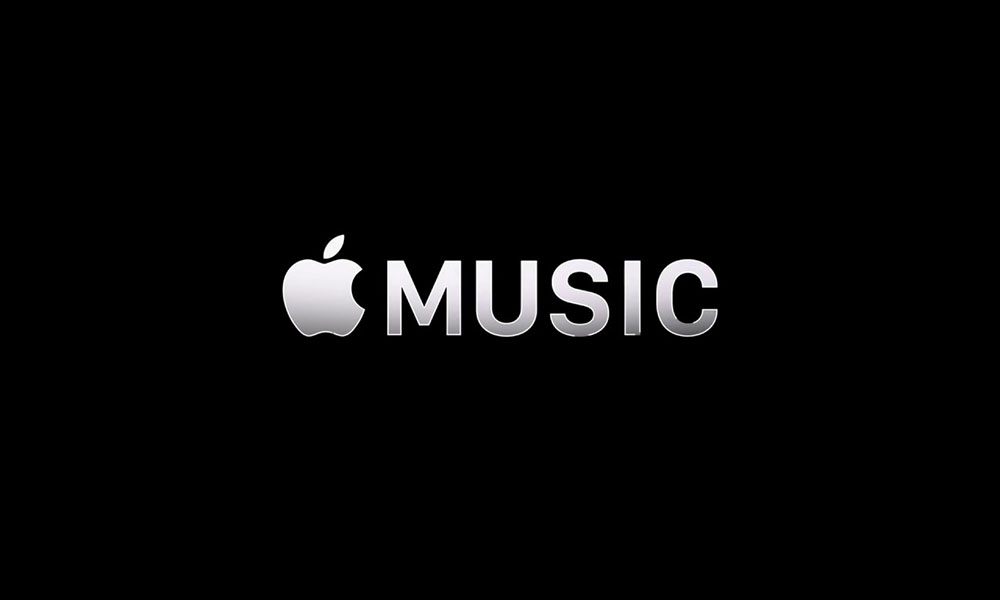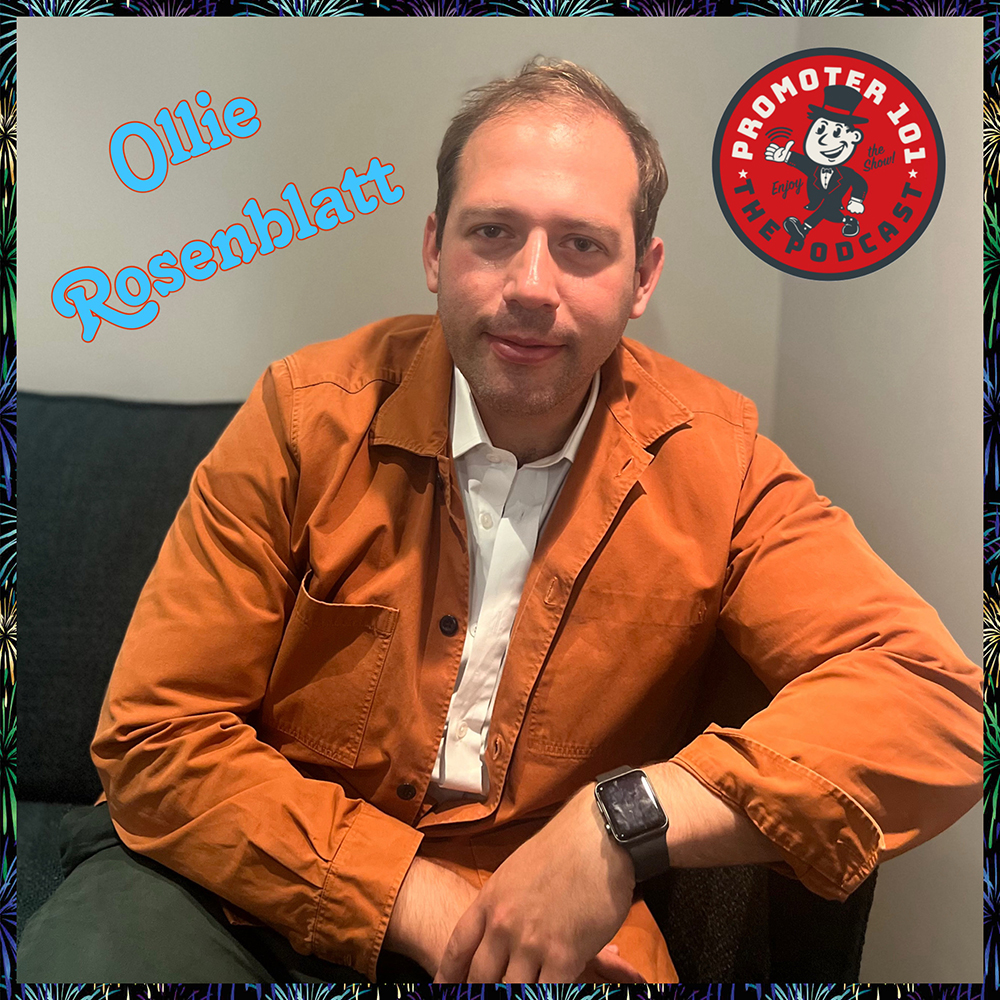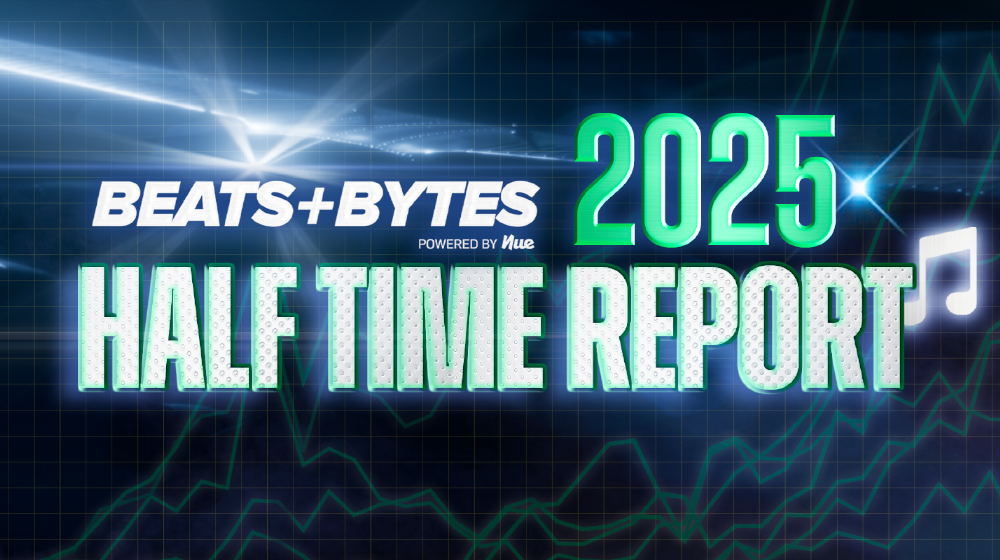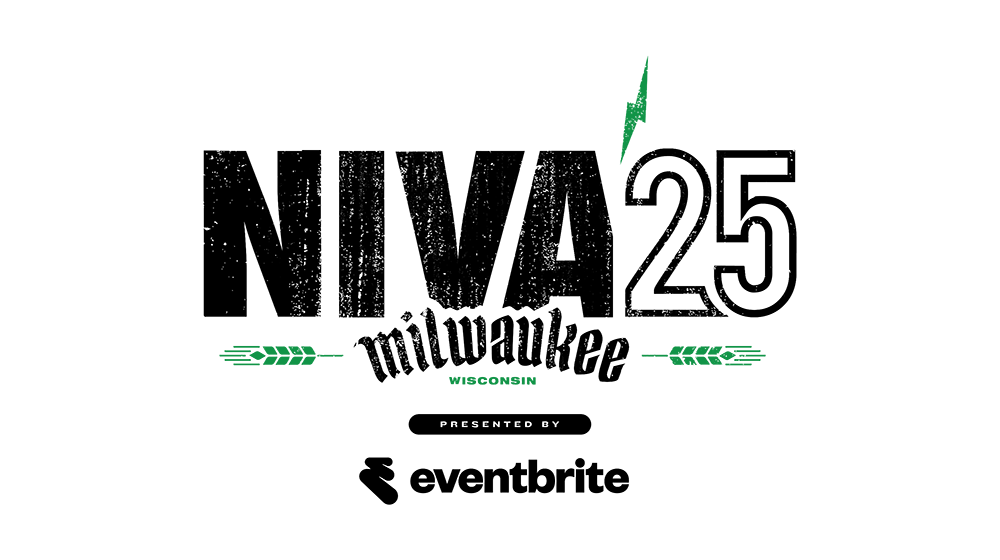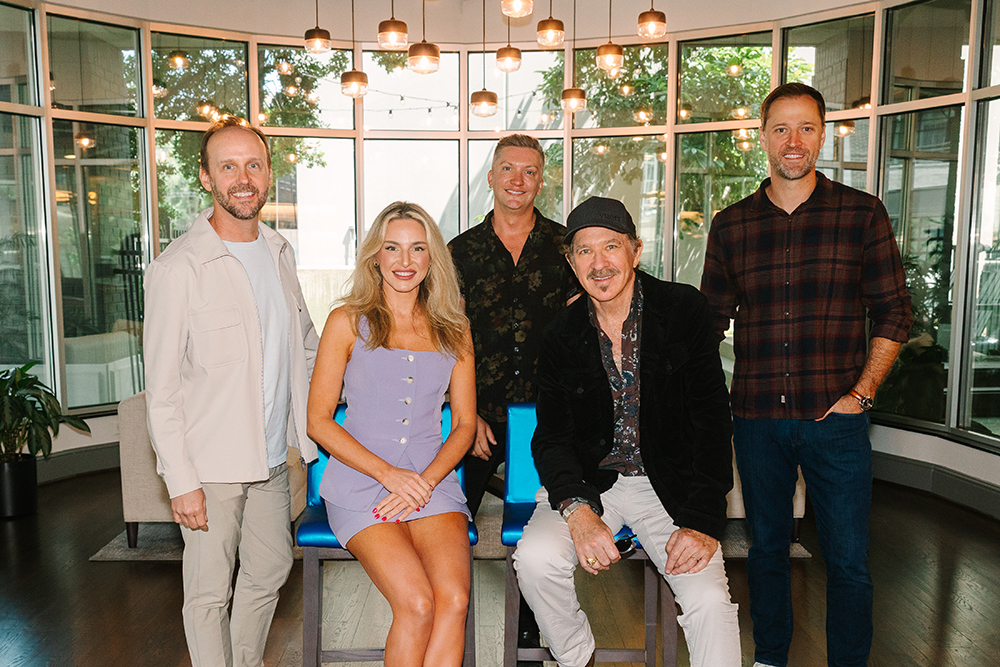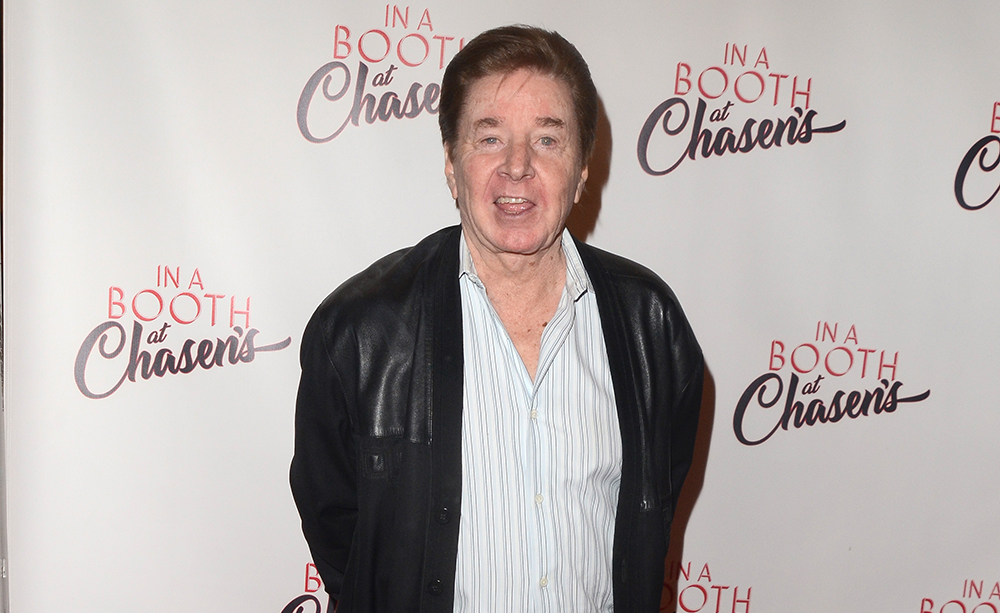This week In the Hot Seat with Larry LeBlanc: Patty Wilson Aden, president & CEO, The Blues Foundation.
For any of Patty Wilson Aden’s friends seeking a stocking stuffer for her this year, you might consider Richard Knight’s 2003 book, “The Blues Highway.”
The comprehensive travel and music guide follows Highway 61, and the Mississippi River, to explore the roots of jazz, blues, Cajun, zydeco, country, gospel, soul, and rock and roll; from Congo Square in New Orleans to the Delta blues joints on up to Memphis, Nashville, St. Louis, Davenport to Chicago.
Aden, who joined The Blues Foundation as its president & CEO on Oct. 1st, 2020, plans to undergo a classic road trip through the cradle of the blues in America as soon as COVID-19 pandemic travel restrictions end.
While the world reveres the blues, its story, and its future, is being enshrined and curated at The Blues Foundation’s Blues Hall of Fame in Memphis.
The Blues Foundation generates a devoted following because the blues is America’s original musical genre, and its followers are loyal to the musical form, and they know that The Blues Foundation represents the industry, respects its fans, and is well-positioned to keep the music alive.
Founded in 1980, The Blues Foundation’s mission is to preserve the blues heritage, celebrate blues recordings and performances, expand worldwide awareness of the blues, and ensure the future of this uniquely American art form.
Aden is uniquely qualified to lead The Blues Foundation. She brings more than three decades of non-profit management experience to the Foundation, with a specialization in the preservation and celebration of African American cultural resources.
Previously, she was president & CEO of the African American Museum in Philadelphia (2012-2020), where she heightened the museum’s visibility and increased admissions. Aden joined the museum’s staff in 2010 as senior VP. She conceived the campaign “Re-Imagine AAMP,” a successful multi-year initiative that led to AAMP increasing and diversifying its revenue streams, growing corporate partnerships, gaining the support of local and national foundations, and cultivating meaningful relationships with individual donors.
Prior to joining AAMP, Aden was the executive director of the Rhythm & Blues Foundation; VP of Arts & Culture for Universal Companies, founded by producer Kenny Gamble; director of the Mid-Atlantic Regional Office of the National Trust for Historic Preservation; and president of the Preservation Alliance of Greater Philadelphia.
Aden began her career in Washington, D.C., where she served as the executive director of the DC Preservation League, as well as other leadership positions.
Aden holds a B.A. in history from Spelman College in Atlanta, Georgia, and an M.A. in Historical Preservation Planning from Cornell University in Ithaca, New York.
The Blues Foundation’s mandate is to preserve the blues heritage, celebrate blues recordings and performances, expand worldwide awareness of the blues, and to ensure the future of this eminently unique American musical form?
It is the mandate. It guides the work that we do. It is what excited me about coming to The Blues Foundation. I am sitting in our office now; the Hall of Fame is here (opened in 2015). We have such a rich collection.
Some may consider the collection to be an underappreciated resource.
People come to Memphis to hear blues music. They visit Beale Street, and they go to the festivals, and here at The Blues Foundation, we have all of those objects, those artifacts, those recordings, and other things that tell the story around the music and the musicians. It gives a dimension to the experience. I am pleased and proud to be the steward now of this collection. We have something to share. Anyone who is a blues enthusiast can come to the Blues Hall of Fame, and I think that they will be blown away by what we have in our collection.
There are hundreds of thousands of blues fans throughout the world, but only a fraction are members of The Blues Foundation.
We intend to promote more and more of what we have, particularly by connecting with the Memphis tourism and hospitality industry, but also with more educational programs, getting out into the schools. We have a program Blues In The Schools (BITS). We really need to do more of that because that is the future of the genre. We talk about promoting the genre forever. We talk about ensuring the preservation of the genre. We have to get into the schools. We have to work with the musicians so that next generation is connected in an authentic way, and in an involved way, with the blues.
The Blues Foundation has 4,000 members?
Yes, 4,000 members.
Also there are more than 170 affiliated local blues societies. So, in essence, The Blues Foundation can be said to represent hundreds of thousands of blues fans and professionals around the world.
We have colleagues and compatriots across the country and internationally. That is the beauty of The Blues Foundations. We have affiliates throughout the world, and we have members throughout the world. What I have found is that the blues community is a warm and welcoming community. They are very encouraging. They have been supportive. I’m the new kid on the block, and I feel like I am being embraced, and that only adds to my excitement.
That (reach) is not to say that guarantees the financial health of any organization. We continually have to engage our members, grow our membership, and grow the financial support. We ask for donations. This is the way that non-profit organizations work. And that’s what my charge is as the new president and CEO of the organization: To make sure that The Blues Foundation remains a vital, well-managed, non-profit organization that is equipped to carry out its very important mission.
When fully operational how many salaried people work at The Blues Foundation in Memphis?
Four full-time employees, including me.
A 4th generation Memphian, your predecessor Barbara B. Newman had a significant banking, and corporate finance background that continued to help stabilize The Blues Foundation. You bring more than three decades of substantial non-profit management experience to The Blues Foundation which will almost certainly help to ensure its future. Other than preserving and celebrating the blues, blues musicians, and the genre’s cultural resources, fundraising is a big part of your new job.
Absolutely, and that is why I emphasize that what I do is non-profit management. I run organizations that are dedicated to the preservation and celebration of cultural resources. While we might be mission-driven and might do what we do because we are passionate about it, we have a charge to run this organization so that it remains vital, and can withstand the ups-and-downs of what is going around us. So this is about sustainability. This is about being sure that we are stewards of the organization. Growing our organizational capacity means identifying leaders that are willing to serve on our board of directors, doing the kind of planning that will make sure that The Blues Foundation remains relevant to its members, and can respond to, and grow its audience through its programming, but also make sure that we have the financial wherewithal to be able to do what we do. This is a really healthy organization despite COVID. I think that is testimony to the blues community that is supporting this organization.
Nevertheless, you have become president and CEO of The Blues Foundation at a challenging time. In the midst of the COVID-19 pandemic; while income streams for musicians have slowed to a trickle due to no paid live performances, and a drop in recording and online royalties; during a period of eroded trust in politicians, parties, and democratic institutions; and at the height of the polarization of the population which has led to fears by African Americans of increased marginalization by a sizeable sector of the American population.
It is a challenging time, but I don’t believe that any of these challenges are insurmountable. I think that these challenges are why an organization like The Blues Foundation is so crucial. Over the course of its history, The Blues Foundation has become the touchstone for the international blues community. Yes, we have had our challenges. The current environment is challenging to us, as well as it is with the larger blues community. As you probably know, our Blues Hall of Fame Museum is closed due to the pandemic for the foreseeable future.
Also, the Blues Music Awards was staged virtually for the first time this year following a ceremony from Memphis in May. That broadcast, hosted by Shemekia Copeland, aired on SiriusXM’s B.B. King’s Bluesville channel 74 on September 4th with four re-airings over the Labor Day weekend.
It did go viral, but I have to say that the blues community rose to the challenge. The Blues Music Awards are the pinnacle celebration for The Blues Foundation, and for blues artists. While we didn’t have that opportunity to have that warm and energetic celebration that we usually have in-person each year in a live show, my gosh, people wanted to participate virtually. What we found was that our audience actually expanded. That virtual presentation allowed us to engage, and to connect with a larger audience that might not otherwise have had the chance to experience the unique atmosphere of the BMAs. So it was a good thing. As far as other challenges that we are facing, this is why having an organization like The Blues Foundation is crucial.
Like the fact that The Blues Foundation was able to launch the very important COVID-19 Blues Musician Emergency Relief Fund.
It’s been a lifeline to be able to send money to musicians very, very quickly. The community stood up and said, “This is important to us. We are going to make sure that a group of musicians have that safety net.” We have had over 600 individual donations, and those donations have gone from $20 to thousands of dollars. What it means is that the blues community, and larger cultural communities understand the hardship that blues musicians might be facing, and they are there to provide that safety net. There is a generosity of spirit within the blues community that is displayed everywhere.
As well, there is also The Blues Foundation’s HART Fund (Handy Artists Relief Trust) which provides the blues community with medical assistance, and advocacy for blues musicians.
Absolutely. We realized that our constituents still need that kind of assistance. We found that people who would donate to the HART Fund were also donating to the COVID-19 Blues Musician Emergency Relief Fund. The HART Fund addresses the needs of blues musicians and their families on a range of health issues. What we have done lately is that we are also now offering virtual screenings. In the past, we tested blood pressure, diabetes, and other maladies that run rampant in the blues community. We are now looking at how we can continue to provide that kind of screening virtually. We remain committed to staying in contact with those we serve by providing these critical services, even under these very difficult circumstances.
The situation of the music industry’s self-employed professionals is unique, and their need to access affordable healthcare benefits is great. The HART Fund can drill down, perhaps, a bit deeper in the blues community than say the Grammy’s MusicCares which provides health, financial, and rehabilitation resources to music people in times of need. MusicCares can’t cover off everyone. Being closer to your constituents, you can better serve them.
It takes a village. I don’t say that to be trite. We do what we can do, and then we refer a musician to those other resources. Together, we are able to address those health needs that, suddenly, some of our musicians are facing. We have different services. We provide different levels of grants but, at the same time, we realize that we are part of a network amongst a larger music community. that has been set up to support musicians, and their families in need, especially around health issues.
(To further address critical health issues for its members, The Blues Foundation joined a number of music associations in 2009 to partner with Sound Healthcare, providing access to a variety of healthcare benefits and insurance programs to those in need.)
A handful of blues musicians have a life span that is startling. Bobby Rush, who earlier this month received the Crossroads of American Music Award from the Grammy Museum Mississippi, just turned 86 (on Nov. 10th). He appeared at the awards, live-streamed from the Museum in Cleveland, Mississippi (on Nov. 12th), to accept the award, and performed.
Also, Buddy Guy is 84. Jimmy Johnson is 92; Bettye LaVette is 74; and Mary Lane and Syl Johnson are both 84.
They are blessed and we, as a blues community, are blessed.
We get to see them.
We get to see them, and as the blues continues to evolve, these major musicians have such legacies They are still playing. Bobby Rush is still out there doing his thing.
(Bobby Rush’s 2020 album “Rawer Than Raw” has been nominated in the Best Traditional Blues category of the Recording Academy’s 63rd Grammy Awards, to be televised January 31st, 2021.)
Blues and jazz are uniquely American.
Yes.
Blues, derived from African traditions–drumming, chanting, vocal and tonal effects, and instruments, is America’s basic musical language. Jazz, America’s original art form, is a blending of musical traditions of Africa and Europe. Over time, the two developed their own standards of form, complexity, literacy, and excellence while articulating uniquely American feelings and thoughts.
No question the blues is truly American.
Absolutely.
People forget that.
People forget that, and it becomes an academic footnote. I would say, and I’m sure that The Blues Foundation leadership would agree, that it (the blues) is not an academic footnote. it is central to our American musical history. It is central to American history. Therefore we have to tell about the authentic experiences of the blues as an African American product. Not to acknowledge that deep and authentic connection is to do a disservice to the history; to the musicians that created the genre; and really we lose the opportunity to respond to this moment, and to connect to that African American population; and to those kids, and those families that are looking at their histories with new eyes, and new levels of appreciation.
I have had people say, “I don’t like the blues.” And I will say, “What style of blues are you talking about? Delta blues, hill country blues, Piedmont blues, Chicago blues, New Orleans blues, swamp blues?”
Well, that too is part of the education. Anytime that you do music education, there are books and books and books, but you have to hear it (the music), and you have to listen. We have to really help people understand that the blues has evolved. There are different types of music within the genre. There’s blues rock and Delta blues. And there’s Chicago blues. Those people that are blues fans and aficionados are aware of, and their ears are attuned to those differences. We want to open up the entire genre to ensure, as we look at contemporary blues, that there are many expressions that remain relevant and connected. You are absolutely right, I think, that there is enough diversity within the blues genre that some things are going to connect. We just need to seize the opportunity through partnerships like SiriusXM to grow the audience.
A superb way of promoting blues is radio. There is, of course, The Blues radio syndication, airing weekly on more than 130 affiliated commercial radio stations. Under a recent arrangement, The Blues Foundation is now providing content programming, including material from its broadcast archive, and its key events, for SiriusXM’s B.B. King’s Bluesville channel 74.
This is an opportunity to grow the number of people who hear blues music. Once you start listening to it (blues), your start staying in it, and once you start staying in it, you really get into it. We believe that there is a direct line that is going to connect blues with growing the blues audience.
The #BlackLivesMatter movement, following the killing of George Floyd at the hands of police as he fearfully decried, “I can’t breathe,” may be leading to some positive change. This shocking incident was the tipping point in a long-standing demand for justice in the names of Eric Garner, Michael Brown, Freddie Gray, Walter Scott, Breonna Taylor, and many other black lives lost to police violence before George Floyd. His death was a wake-up call for many that racism and inequality are not things of the past.
Arts and culture have unquestionably been an important part of the #BlackLivesMatter movement. So, now with subsequent protests and the continued growth of the #BlackLivesMatter movement, has come several common messages, including the importance of embracing diversity, and accepting people regardless of race, religion, ethnicity, sexuality or background; but also that this is an unprecedented time to reflect on the relationships among institutional philanthropy supporting culture; while the heightened focus of many African Americans is on seeking to clarify their identities, and pinpoint their place in American society. Blues and education play into that. The study of the blues is the study of the culture that produced this music, and I believe there’s a greater awareness of all of that now.
I think that is somewhat correct. We are at a special moment, socially and culturally. I think that The Blues Foundation is well-positioned right now to respond to that need. Certainly, the charge that I have been given by this board is to ensure that the work that we do is relevant to the community that created the blues, and we have to acknowledge that the blues is an African American cultural resource. Sometimes that is not clearly stated when that is relevant to The Blues Foundation, and I would say, to the blues community in general.
The late American civil rights activist and educator W.E.B. Du Bois believed that “The problem of the 20th Century is the problem of the color-line.”
The concept of the color-line refers essentially to the role of race and racism in history and society. Certainly, the current and ongoing relevance of the color-line concept, as well as issues of diversity, and multiculturalism, can be well explored through musical camps, workshops, and in-school programs.
Absolutely. So you are probably familiar with Generational Blues?
While at the African American Museum in Philadelphia, you oversaw mentoring of talent. One of the educational programs introduced provides students, pursuing graduate-level degrees in African American history and related fields, hands-on experience by working in the museum.
The Generation Blues program, now under you at The Blue Foundation, strives to ensure the future of the blues by helping young people get the education they need and deserve to help them grow as blues artists.
(The Blues Foundation expanded its longstanding Blues in the Schools youth education efforts– which supports blues educators by providing a classroom curriculum that incorporates elements of history, math, English, music, and other disciplines as they can relate to the entire blues industry— with Generation Blues in 2010. This scholarship program allows qualified applicants under the age of 21 to study their instrument of choice at camps, seminars, and workshop programs.)
Generation Blues scholarships, as with Blues in the Schools programming, is intended to expose new generations to blues music.
That is a program that we believe helps keep the genre alive. It is giving musicians the opportunity to hone their craft. Sometimes they don’t know where to go to participate in those camps. So with our scholarship, they are able to participate. Kingfish (Christone “Kingfish” Ingram) participated in Generation Blues, and went to the summer camps, and was able to grow as a musician. But that color-line, what Du Bois described as “the race issue,” and what has been known as the “negro problem” for centuries, is part of the context of the blues. It is inescapable. We have used the word “authentic” several times. We have to really face not only that troubling history but we also have to acknowledge some of our current issues that reflect the disparities within our larger society, but also within the music community as well. The blues has to be considered a reflection or a mirror of the larger society. One thing I look forward to hearing is how our current blues musicians reflect and respond to some of the issues that are out there today. I think that it is rich inspiration for new musical expression
So one of The Blues Foundation’s primary resources is education. If younger people get to see older blues performers live or learn about them through their recordings, those are the type of activities that will lead to blues having a healthy future.
Absolutely. I agree with you, and I feel very comfortable saying that the board and the leadership of The Blues Foundation view supporting their own peoples’ engagement in blues as critical. It is critical to the ongoing evolution of the genre. It is critical to ensure that the kids themselves are enriched by a blues education.
This is particularly true of children of color who would really benefit from understanding how blues music reflects not only international musical history — because blues music is the root of all American music—but also understanding the historical context of when that music was created. There is a direct line to be drawn between the music, the sentiments expressed in the music, and what was going on in the lives of the artists who created it. The blues is a musical expression of African Americans’ response to the challenges they faced in a larger society. There’s a historical context and understanding of the music’s collection to a larger historical story that is really critical to all of the kids, especially to children of color. We want to make sure that we keep our history alive, and having legacy artists that can personally testify to their life story, and how it reflects that larger context, and how they express it in their music, that’s a rich, rich opportunity. An unparalleled opportunity.
Many of those chronicling and celebrating the blues have been non-African Americans. Among the best-known are: Robert Santelli, director of popular music and performing arts at Oregon State University, and the author of several books about the blues; author/historians Robert Palmer, Peter Guralnick Paul Oliver, Preston Lauterbach, and the late Sam Charters; American teacher/musicologist/folklorist John A. Lomax, and his son Alan; filmmaker Martin Scorsese; and both of your predecessors, Barbara B. Newman and Jay Sieleman.
It is intriguing how blues has so deeply affected so many non-African Americans around the world.
I do think that it is interesting. We cannot overstate the importance of those people who have taken on these missions; and sometimes it is a passion project, of preserving the music, and the recordings of the artists, and sharing their stories. I don’t care what their background is; whether they be African American, white or other backgrounds. It is important that the story be told. I do believe that we do have a special charge, and challenge to connect with the African American community. The African American community sometimes recognizes other genres more readily than the blues. I feel a special charge as a black woman to make sure that we make that connect. That, as we diversify and grow the blues audience, that we make a special push to connect with African Americans who may not be listening to blues right now.
While blues is considered to be mainstream today, albeit as a far lesser force than other genres, its position is a stark contrast to the late ‘60s, when blues had become diminished by African Americans while being enthusiastically embraced by audiences, and musicians overseas.
Bluesmen B.B. King, Muddy Waters, and Bobby Bland each voiced both their disappointment in and their understanding of African American turning from blues to soul music in the 1960s. As B.B. King put it in his autobiography “Blues All Around Me” (1996), “It makes no difference that the blues is an expression of anger against shame or humiliation. In the minds of many young blacks, the blues stood for a time and place they’d outgrown.”
Bobby Schiffman, manager of the Apollo Theater in the 1960s, explained why a blues show with B.B. King, Bobby Bland, T-Bone Walker, and others did not draw the crowd they had expected: “Blues represented, at that time, misery. Misery and blues were a throwback to slavery, to a time when the black man, intellectually, was at the lowest point of his history.”
British blues gradually became a mainstream phenomenon in North America, led the Rolling Stones, John Mayall and the Bluesbreakers, Fleetwood Mac, Eric Clapton, and Led Zeppelin as R&B-inspired pop, funk, and disco revolutionized African American music.
However, there has been a return of the blues to a level of mainstream popularity over the past 20 years, starting with Stevie Ray Vaughan and Double Trouble, Robert Cray, Keb’ Mo’, Jonny Lang, and the Tedeschi Trucks Band (Susan Tedeschi, and Derek Trucks), along with Joe Louis Walker, Kenny Wayne Shepherd, Warren Haynes, Janiva Magness, Tab Benoit, Ruthie Foster, and Joe Bonamassa; and more recently with Shemekia Copeland, Marcus King, Mike Zito, Larkin Poe, and 21-year-old Christone “Kingfish” Ingram who walked away with 5 statues at The Blues Foundation’s 2020 Blues Music Awards.
(Ingram won three awards for his debut album, “Kingfish,” as Best Emerging Artist Album, Best Contemporary Blues Album, and Album of the Year, along with two performer awards as Best Contemporary Blues Male Artist, and for Instrumentalist-Guitar.
We are really excited about some of the new people that are coming in. But we realize that there is still work to be done. We want to celebrate the authentic history of the blues, to lift up blues musicians, and encourage the genre’s continued evolution in a really positive way. Tell the stories of the blues, and the musicians that created the blues, and make sure that narrative is one that resonates with younger people. We realize that there are other genres that might be more popular—not might be, but are certainly more popular—but we believe that if you look someone like Kingfish–he represents a musical evolution of the blues. I think that we have the opportunity today to really reconnect with our African American artists, reconnect with younger kids by re-highlighting the true story of the blues, telling its authentic history, and showcasing some of the new creators that are out there.
Like many of my generation, I learned of the blues as a teenager in the ‘60s. First discovering the recordings by Bessie Smith, Jimmy Reed, John Lee Hooker, Muddy Waters, and Howlin’ Wolf. There are two specific early seminal blues-related moments in my life. The first was seeing Mississippi bluesman Howlin’ Wolf together with the Rolling Stones on ABC-TV’s “Shindig” (broadcast May 20, 1965); and then discovering Jim Rooney’s 1971 biographical book “Bossmen: Bill Monroe & Muddy Waters.”
In my early 20s, I was able to spend time with Muddy Waters, and pianist Otis Spann, and to interview “Big Mama” Thornton, John Mayall, and Johnny Winter.
From Toronto, I traveled to Memphis and drove down U.S. Route 61, known as the Blues Highway because it runs through the Delta country, and drive through the Mississippi towns of Natchez, Vicksburg, Leland, Cleveland, Clarksdale, and Tunica to through Baton Rouge, Louisiana.
You still closely feel the birthplace of the blues at the Dockery Plantation, in Dockery, Mississippi, between Ruleville and Cleveland, Mississippi, which was a 25,600-acre cotton plantation and sawmill that once supported over 2,000 workers who were paid in the plantation’s own coins.
Blues musicians Charley Patton, Robert Johnson, and Howlin’ Wolf all resided at the Dockery Plantation which is widely regarded as the place where Delta blues music was born. The property was added to the National Register of Historic Places in 2006.
In October, you traveled 53 miles by car following U.S. Route 61 from Memphis to spend two days in Helena, Arkansas to get a feel for the King Biscuit Blues Festival, and its fans. Have you been able yet to go to the Dockery Plantation or to Clarksville, Mississippi which brings in about $10 million a year in revenue due to its blues heritage?
I haven’t. One of the things I have to do and the COVID has certainly made it a bit more difficult, is that I need to get out on the road. The blues community is far-flung. There’s these pockets of history. You travel the roads and you need, I guess, to make that pilgrimage to those places. One thing I should make very clear is that I am a student of the blues. And I only joined The Blues Foundation as of October 1st.
Coming to The Blues Foundation with a background of being on the staff of the African American Museum in Philadelphia, in 2010 as senior vice president, and as president and CEO of for 8 years (2012-2020), and previously executive director of the Rhythm and Blues Foundation for three years (2006-2009). You have been associated for decades with non-profit cultural organizations.
Exactly. That is what I specialize in. I run non-profit organizations that preserve cultural resources. I specialize in African American cultural resources. But there is always something more to be learned. I was at the African American Museum in Philadelphia for 10 years mainly looking at history, and at fine art. Before that, as you know, I was at the Rhythm and Blues Foundation for three years, and there are so many connections between rhythm and blues artists, and the history of rhythm and blues, and the blues.
But the blues is a different history.
I am very aware that I need to educate myself. I need to steep myself in that history. And that is one reason why I am so eager to get out on the road. To go to Clarksdale and other places; so I can make that connection, and meet the people who are there doing the work.
I have visited the Delta Blues Museum in Clarksdale which houses artifacts related to the blues, notably the shack where Muddy Waters purportedly lived in his youth on the Stovall Plantation nearby. There’s also a guitar sculpture at the crossroads of Highway 61 and 49 where legend has it, Robert Johnson sold his soul to the devil, and there’s the Riverside Hotel (formerly the G.T. Thomas Afro-American Hospital) where Bessie Smith died in 1937.
Among the prominent African American artists from Clarksdale are Sam Cooke, Ike Turner, Sir Mack Rice, Willie Brown, Lil Green, Junior Parker, and Johnny B. Moore.
Actor Morgan Freeman and former Clarksdale mayor Bill Luckett opened the popular Ground Zero Blues Club in Clarksdale in 2001.
Whenever the COVID-19 pandemic eases up, you can bet that I’m heading out on the road. I’m just so excited to do it.
While you were at the African American Museum, one of its most popular exhibits was “Come See About Me: The Mary Wilson Supremes Collection” in 2012 which featured more than 30 of the Supremes’ gowns, videos, images, and artifacts. As a co-founder of the Supremes, Mary Wilson became the guardian of the dresses as other members left. Some of the dresses vanished when Motown Records moved from Detroit to Los Angeles in 1972, but occasionally they’d show up for sale on eBay, and Mary purchased back the gowns. How did the exhibit come to African American Museum?
It was a matter of maintaining friendships and professional connections. I met Mary Wilson’s attorney while I was working at the Rhythm and Blues Foundation, and I became familiar with the exhibit that Mary Wilson was presenting in the United Kingdom and elsewhere. We then got an opportunity to bring it to Philadelphia and it was a blockbuster. What we found was that the gowns told a history and the music of the Supremes connected to all sorts of people. And I think that the blues does the same thing. There is a very diverse audience for the blues. That is what you see at blues festivals, and that is something that we realize is a commodity. It is an asset that we have people of all backgrounds that are blues fans. That is something that we can build upon.
Those are the types of lessons you might have learned following university when you worked as Director of the Mid-Atlantic Regional Office of the National Trust for Historic Preservation and as the executive director of preservation advocacy organizations in both Philadelphia and Washington, D.C.
Absolutely. I had the fortune of choosing a relatively specialized career in historical preservation and launching my early career in finance positions in historical preservation organizations. As my career evolved I came to understand that my real niché was in running organizations that preserved and advocated for those buildings. One thing I say a lot, especially as I talk to students—high school students, college students, and grad students—they often think that their careers are going to be linear. “I’m going to do this and then I’m going to do this and I’m going to do that.” It is going to be a steady progression. That is not the way that life works. So I started my career in historic preservation, and then I sold a historic theatre to Kenny Gamble. You are probably familiar with Gamble and Huff of Philadelphia.
Of course, Kenny Gamble and Leon Huff, co-owners of Philadelphia International Records. The two wrote and produced some of most popular R&B hits of the 1970s and 1980s, including “If You Don’t Know Me by Now” recorded by Harold Melvin & the Blue Notes; “Back Stabbers,” “For the Love of Money,” and “Love Train,” recorded by the O’Jays, as well as the “Me and Mrs. Jones,” recorded by Billy Paul. The two were the first recipients of the Ahmet Ertegun Award in 2008 by the Rock and Roll Hall of Fame. I used to go by the Philadelphia International Records’ office whenever in Philadelphia.
Well, the building burned down, unfortunately, a few years ago. There was a fire. There’s a hotel going up in that spot.
(A fire in 2010 damaged the Philadelphia International Records building, and it was sold, and razed in 2015. Sigma Sound Studios, the recording facility on North 12th Street that engineer Joe Tarsia founded in 1968, where Gamble and Huff recorded, is today a gutted building owned by real estate developers since 2015. There‘s now talk of renovating the studio as a Philadelphia music history museum.)
So I sold Kenny Gamble The Royal Theatre.
(After opening in 1919, the 1,125-seat Royal Theater, located on South Street between 15th and 16th Streets, became widely regarded as “America’s Finest Colored Photoplay House.”)
In terms of its importance to African American history the Royal Theatre in
sits alongside The Regal Theatre in Chicago or The Fox Theatre in Detroit, the Howard Theatre in Washington, its namesake in Baltimore, and the Apollo Theatre in Harlem. The theater was on America’s famous national chitlin’ circuit hosting such leading African American performers as Billie Holiday, Fats Waller, and Bessie Smith.
Exactly. The same performers came through. It served the Philadelphia community very much the same way that the Apollo, The Howard, and other African American theatres.
The Royal Theatre was added in 1978 to the Philadelphia Register of Historic Places, and in 1980 to the National Register of Historic Places.
(To save the Royal Theatre from demolition, the Preservation Alliance for Greater Philadelphia purchased the theatre, and then Kenny Gamble’s Universal Companies purchased the theatre as well as buildings on both sides and across the street from the Preservation Alliance for Greater Philadelphia for $250,000.)
The Royal Theatre was set for demolition. There was an owner who neglected the building in hopes of eventually tearing it down. So the Preservation Alliance was able to acquire it. We put an easement on the property to ensure that it would be preserved. At that time Mr. Kenny Gamble was looking at creating a music district around South Street, and the Royal Theatre was going to be the hub of that district. So long story short, I sold Mr. Gamble that theatre.
(However, Universal, despite receiving nearly half a million dollars from city, state, and federal coffers, struggled to redevelop the site for 14 years and its physical condition worsened. In 2016, OCF Realty acquired the property for $3.7 million, and the building had decayed so badly there was almost no way to save it. In 2015, the Philadelphia Historical Commission allowed the owners to demolish the Royal Theatre but preserve its facade to be incorporated into a new retail and residential building.)
You went to work for Kenny Gamble.
We got to know one another, and he really focused on that strategy of positioning Philadelphia as a music city, like Memphis, and he hired me at the Universal Companies. I was putting together strategies (including the Philadelphia Economic Development and Musical Heritage Strategy) to make Philadelphia the home for rhythm and blues. Central to that mission was to bring the Rhythm and Blues Foundation to Philadelphia. The Rhythm and Blues Foundation came to Philadelphia. They had to fill a leadership position and Mr. Gamble said, “I will lend you Patty for an executive role. It was supposed to be a temporary assignment for three months. I stayed there for three years because I loved what I was doing.
How you came to be the executive director of the Rhythm and Blues Foundation, and your work for the African American Museum, underscores how important relationships are in the music community.
As I said, while I was there, I worked with an attorney that was on board of the Rhythm and Blues Foundation, and then I worked for the African American Museum, and we did the Mary Wilson Supremes’ exhibit. It’s all connected. It is all about integrating African American cultural resources whether it is the Royal Theatre or whether it is the gowns of the Supremes or whether it is blues music. It is all related and that is what I specialize in
in 1995, Kenny Gamble and Leon Huff were inducted into the Songwriters Hall of Fame, and you attended the induction gala in New York.
I’ll tell you the best moment was going to the Songwriters Hall of Fame induction for Gamble and Huff. That was such a treat for me. It was a great night. I go about my career and there are instances when you say to yourself “I’m so lucky. How many people get to experience this?” That is how I feel about the work that I do. I have the real, real opportunity to work with and work for really, really special people and as I work with these people I intend to participate in these very special moments.
Where are you from originally?
I grew up in Newark (Delaware) which is where the University of Delaware is.
Do you have family in Memphis?
No. It’s just me and the dog. and the cat. All of the family is back in Delaware.
Has anyone yet taken you to Gus’s World Famous Fried Chicken?
Yes, I’ve been to Gus’s. I have been to Central (BBQ). Because of COVID, I am not getting out to check out restaurants as much as I would like. But I don’t cook. So I have been making regular stops at some restaurants.
You’ve been in Memphis from Philadelphia only a short time. You missed Joe Biden’s transition celebrations there.
I moved two weeks too soon. I missed the celebration, but I am finding that Memphis is going to be a good new home for me.
Larry LeBlanc is widely recognized as one of the leading music industry journalists in the world. Before joining CelebrityAccess in 2008 as senior editor, he was the Canadian bureau chief of Billboard from 1991-2007 and Canadian editor of Record World from 1970-80. He was also a co-founder of the late Canadian music trade, The Record.
He has been quoted on music industry issues in hundreds of publications including Time, Forbes, and the London Times. He is a co-author of the book “Music From Far And Wide,” and a Lifetime Member of the Songwriters Hall of Fame.
He is the recipient of the 2013 Walt Grealis Special Achievement Award, recognizing individuals who have made an impact on the Canadian music industry.




















